Common Road Markings
- 1/28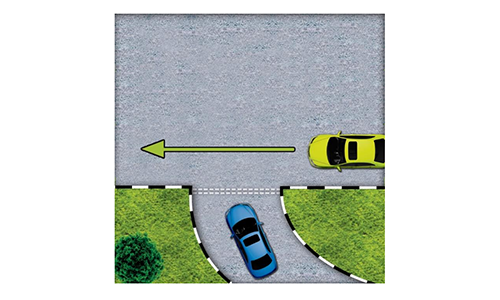
Parallel broken white lines painted across a lane signify a yield or give-way marking. Drivers encountering these lines at a junction are required to allow vehicles on the intersecting roadway to proceed before entering the flow of traffic.

A single solid white line painted across a lane at a junction serves as a stop line. Drivers approaching this marking are legally obligated to bring their vehicle to a complete stop before the line and may only proceed when it is safe to do so.

The presence of parallel white lines, often in a dashed or solid formation and associated with pedestrian traffic signals, visually marks a specific area intended for pedestrians to safely cross the roadway.

The green pedestrian signal indicates that pedestrians have the right of way to cross. Turning vehicles must yield to pedestrians who are using or starting to use the crossing at this time.

The distinctive pattern of alternating black and white stripes painted across the road, often with accompanying flashing yellow beacons, is the visual hallmark of a zebra crossing, a specific type of pedestrian crossing.
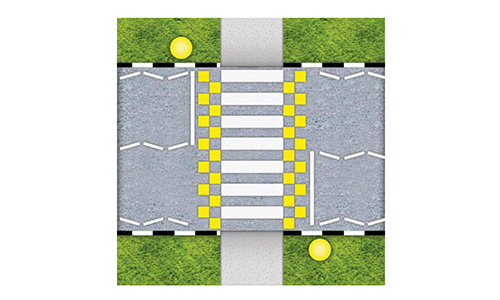
The visual of a zebra crossing, even when raised, implies a priority for pedestrians wishing to cross. Drivers should be prepared to stop to allow them safe passage.

The pattern of diagonal black and yellow stripes across the roadway is a standard visual warning indicating the presence of a road hump or speed bump designed to slow down vehicles.
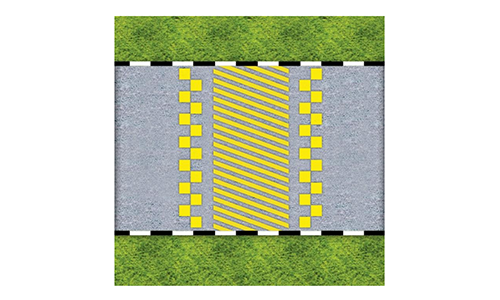
The visual of diagonal stripes across the road, often associated with humps or speed bumps, indicates a need for drivers to reduce their speed for safety and comfort.

A broken white line in the center of a road visually signifies a two-way traffic flow, with one lane for each direction. The broken line indicates that drivers are allowed to cross it to overtake other vehicles, provided the passing lane is clear of oncoming traffic.

A solid white line in the center of a two-way road visually signifies a barrier that should not be crossed for routine maneuvers like overtaking. While exceptions might exist for genuine emergencies, the general rule is to remain within your lane and not cross this marking.
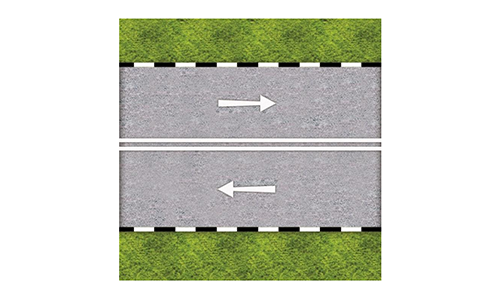
Unbroken double white lines signify a prohibition of crossing. The safest and legal action would be to look for a break in the lines or, if none exists, to proceed and find an alternative way to reach the destination without crossing the solid double lines.

A yellow line at the side of the road signals that parking is regulated or restricted in that area from 7 a.m. to 7 p.m., except on public holidays and Sundays.
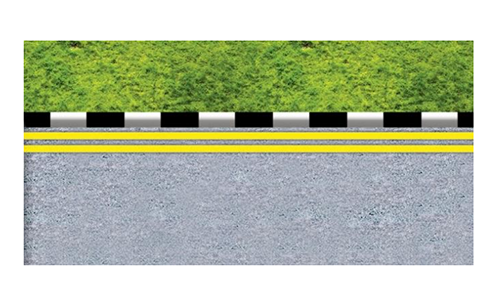
Double lines often signify a stronger prohibition than a single line. Therefore, unbroken double yellow lines strongly suggest that parking is not allowed in the area where they are marked.
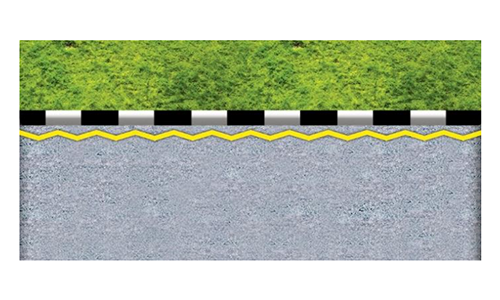
A single yellow zig-zag line painted along the edge of the roadway is a road marking used to indicate an area where parking is prohibited for general purposes. However, it often allows for brief stops to pick up or drop off passengers.

Parking at a double yellow zig-zag line is a violation of the "No Stopping at all times" rule indicated by these markings. The most likely consequences are the imposition of demerit points on your driving license and a monetary fine.
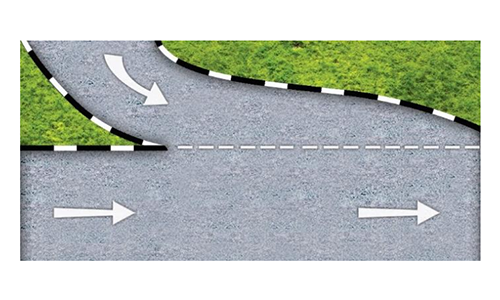
Broken white lines typically allow lane changes or merging when safe. This line marks the edge of the accelerating lane allowing entry to the main carriageway.
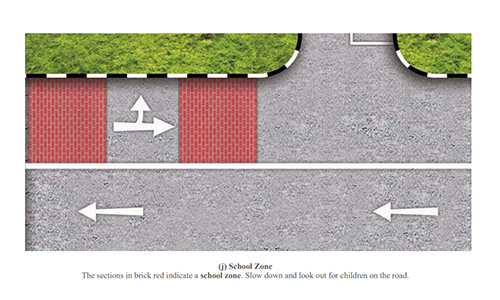
The red brick section visually indicates a school zone. School zones are areas where you should anticipate the presence of children. Therefore, the visually implied action is to reduce your speed and be extra cautious.

The yellow box is typically placed at intersections. It is a marked area that should be kept clear to allow traffic flow. Do not drive into the yellow box when traffic has come to a standstill at the left lane.

Chevron markings are typically used to separate traffic flows or mark hazards. The solid white lines outlining them imply that vehicles should not enter this area.

Solid yellow lines typically indicate a lane boundary that should not be crossed by regular traffic. This marking is used to segregate lanes with specific uses, such as bus lanes, from general traffic flow, ensuring the dedicated lane remains free for its intended vehicles.

The solid yellow and red lines imply a strong prohibition on entering the lane during its operational hours (Mondays to Saturdays: 7:30 am to 11:00 pm). However, this restriction does not apply on Sundays and Public Holidays.
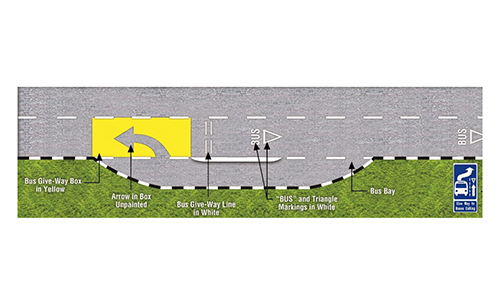
The yellow box and the curved arrow strongly suggest a designated area and direction for bus movement, with the implication that other traffic should give way.
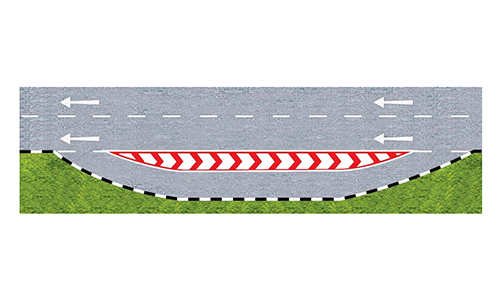
Chevron markings are often used to highlight areas that should be avoided or where extra caution is needed due to potential hazards or changes in traffic flow.

The white rectangular markings are the standard visual representation of a pedestrian crossing, specifically designed and marked for pedestrians to cross the road safely. The zig-zag lines are there to alert the presence of zebra crossing. It is not permitted to cross the road on these zig-zag lines.
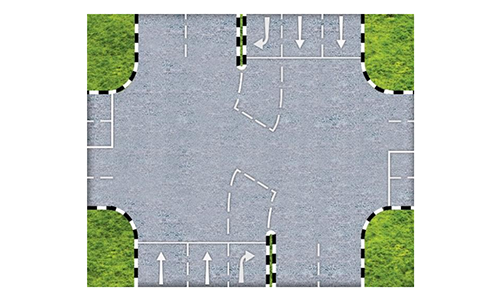
The dashed white lines visually separate a portion of the road to the left of the main traffic flow. Within this separated area, an arrow pointing right is clearly visible. This pocket is a designated lane for vehicles preparing to make a right turn at the intersection.

The white triangular markings are positioned along the edges of the road, creating a visual effect that reduces the perceived width of the driving lane. This visual narrowing can instinctively lead to a reduction in speed for safer navigation within the apparent constraints of the roadway.

The solid white line acts as a visual stop line for vehicles approaching the pedestrian crossing marked by the broken white lines. You must stop at this line to allow pedestrians using the designated crossing area to cross safely.

The pointed white arrow with additional horizontal lines within it, painted on the road surface. This type of marking is specifically used to provide advance warning to motorists about a pedestrian crossing (often a zebra crossing) located further ahead.
 Pass the Exam Easily with Detailed 3-Level Practice | 1-Day Full Access Free — Offer Ends in
Pass the Exam Easily with Detailed 3-Level Practice | 1-Day Full Access Free — Offer Ends in


